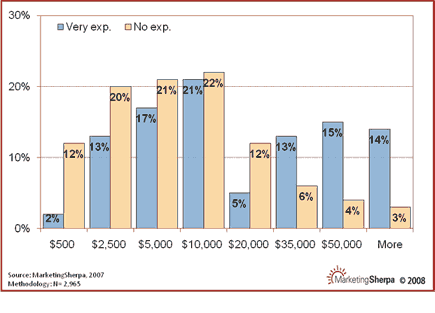Chinese Cars: A Realistic Assessment Of Their Global Potential

Table of Contents
The Rise of Chinese Automotive Technology
The rapid advancements in Chinese automotive technology are a key driver of their global potential. This progress is visible across several key areas.
Technological Advancements
Chinese automakers are making impressive strides in electric vehicle (EV) technology, autonomous driving systems, and battery technology.
- Leading EV Brands: Companies like BYD, NIO, and Xpeng are not only producing competitive EVs but are also pushing the boundaries of battery technology, range, and charging speeds. Their innovative features, such as blade batteries and advanced driver-assistance systems (ADAS), are challenging established players.
- Significant R&D Investment: Massive investments in research and development, coupled with strategic collaborations with international technology companies, are fueling this rapid innovation. This commitment to technological advancement is a key differentiator.
- Market Share Growth: The market share of Chinese EVs is experiencing exponential growth, both domestically and internationally. This demonstrates the increasing consumer acceptance of Chinese-made electric vehicles.
Competitive Pricing and Value Proposition
A significant advantage of Chinese cars is their competitive pricing. This value proposition is particularly attractive to price-sensitive consumers globally.
- Price Comparison: Compared to established Western brands offering similar features, Chinese cars often come with a significantly lower price tag.
- Feature-Rich Vehicles: Many Chinese vehicles offer a wealth of features typically found only in higher-priced models from other manufacturers, including advanced safety features, infotainment systems, and connectivity options.
- Government Subsidies: Government subsidies and incentives in China have also played a crucial role in making these vehicles more affordable and driving down production costs.
Challenges Facing Chinese Automakers in the Global Market
Despite the rapid progress, Chinese automakers still face significant challenges in establishing themselves firmly in the global market.
Brand Perception and Trust
Overcoming the lingering perception of lower quality and reliability remains a key challenge. Building trust with international consumers requires a concerted effort.
- Marketing and Branding Strategies: Chinese car brands are investing heavily in sophisticated marketing and branding campaigns to showcase their technological advancements and improved quality control.
- Building Brand Loyalty: Consistent quality control and superior after-sales service are essential to building brand loyalty and overcoming past negative perceptions.
- Transparency and Communication: Open communication and transparency regarding manufacturing processes and quality standards are vital to fostering trust.
Global Supply Chains and Logistics
Establishing and managing efficient and reliable global supply chains is a complex undertaking.
- Geopolitical Factors: Geopolitical instability and trade tensions can significantly disrupt supply chains and increase transportation costs.
- International Partnerships: Building strong partnerships with international suppliers is essential for securing reliable access to components and materials.
- Transportation Costs and Delivery Times: Optimizing logistics and reducing transportation costs are crucial for remaining competitive in the global market.
Regulatory Hurdles and Compliance
Navigating the diverse regulatory landscape in different countries presents a major hurdle.
- Emissions Standards and Safety Regulations: Meeting stringent emissions standards and safety regulations varies greatly across global markets.
- Market Adaptation: Adapting vehicles to meet local market preferences and consumer demands is essential for success.
- Bureaucratic Challenges: The complexities of market entry procedures and bureaucratic hurdles in different countries can present significant challenges.
Opportunities for Growth and Expansion
Despite the challenges, significant opportunities exist for Chinese automakers to expand their global reach.
Emerging Markets and Developing Economies
Emerging markets and developing economies offer immense potential for growth.
- Demand for Affordable Vehicles: The demand for affordable and reliable vehicles in these markets is substantial.
- Technological Advantages: Chinese automakers are well-positioned to capitalize on this demand with their competitive pricing and advanced technologies.
- Local Partnerships: Establishing partnerships with local distributors and businesses can facilitate market penetration and build brand awareness.
Focus on Specific Niches
Specializing in specific market niches can allow Chinese automakers to build strong brand identities.
- EV Specialization: Focusing on electric vehicles offers a significant advantage in markets prioritizing sustainable transportation.
- Niche Vehicle Types: Concentrating on specific vehicle types, like SUVs or commercial vehicles, can allow for targeted marketing and product development.
- Meeting Specialized Needs: Catering to specific consumer needs and preferences can lead to higher customer satisfaction and brand loyalty.
Conclusion
The global automotive landscape is rapidly changing, and Chinese car manufacturers are playing an increasingly important role. While challenges remain regarding brand perception and global market entry, the technological advancements, competitive pricing, and focus on emerging markets present significant opportunities for growth. The future of the automotive industry will undoubtedly be shaped by the continued evolution and global expansion of Chinese cars. To stay informed about the latest developments in this dynamic sector, continue to follow industry news and research the latest offerings from Chinese automakers. Consider exploring the features and benefits of Chinese car brands as you consider your next vehicle purchase.

Featured Posts
-
 Worlds Tallest Abandoned Skyscraper Construction To Restart After A Decade
Apr 26, 2025
Worlds Tallest Abandoned Skyscraper Construction To Restart After A Decade
Apr 26, 2025 -
 The China Factor Analyzing The Struggles Of Bmw Porsche And Other Automakers
Apr 26, 2025
The China Factor Analyzing The Struggles Of Bmw Porsche And Other Automakers
Apr 26, 2025 -
 Analysis Trump Administrations Efforts To Undermine European Ai Rules
Apr 26, 2025
Analysis Trump Administrations Efforts To Undermine European Ai Rules
Apr 26, 2025 -
 Uncertain Times The Next Federal Reserve Chairmans Complex Task
Apr 26, 2025
Uncertain Times The Next Federal Reserve Chairmans Complex Task
Apr 26, 2025 -
 Is Ahmed Hassanein On Track To Be The First Egyptian In The Nfl Draft
Apr 26, 2025
Is Ahmed Hassanein On Track To Be The First Egyptian In The Nfl Draft
Apr 26, 2025
